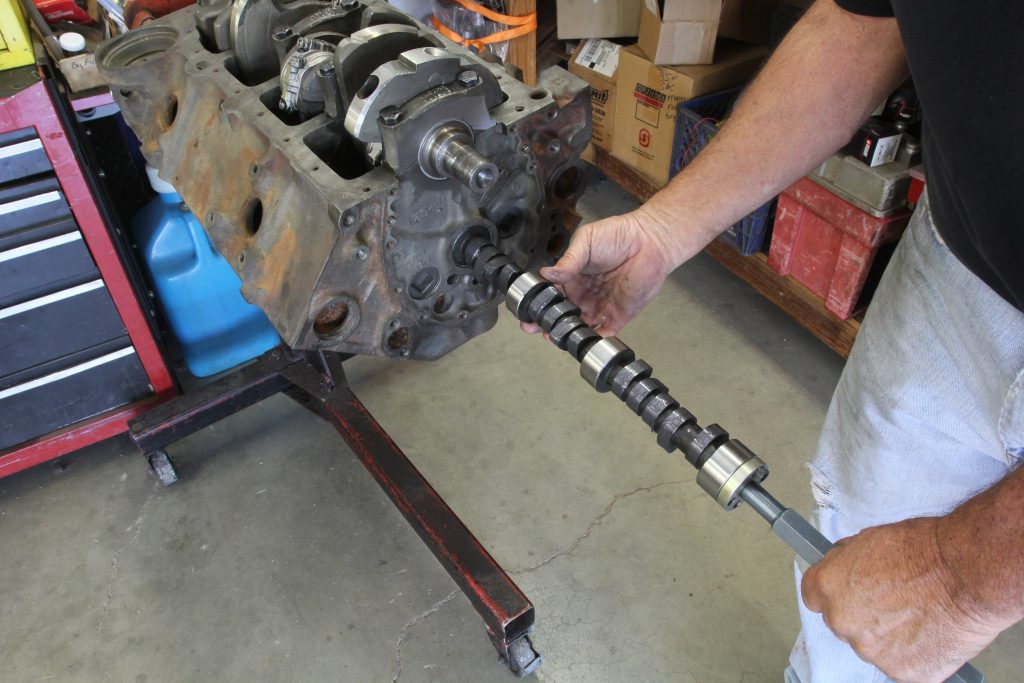If the rotating assembly is the heart and soul of your engine, the camshaft is the brains. It controls the movement of the entire valvetrain, telling the valve when to open and close and allowing your engine to breathe properly.
Fortunately, you don’t have to be a brain surgeon to pick the right cam for your vehicle. In fact, you don’t even have to be well-versed in camshaft specs and technology. But you do need to complete some basic homework before ordering a cam. [NOTE: See How to Choose the Right Street Cam (Part 1)]
The 8 Key Pieces of Info You Need to Know Before Ordering a Camshaft
Here are the key pieces of information you’ll need to have on hand when ordering your camshaft:
1. Vehicle Purpose
Is your vehicle going to stay mainly on the street, dragstrip, or a little of both? This information will go a long way in deciding your cam and lifter style. For example, roller cams and solid lifters tend to foster better high-rpm power, so they are an excellent choice for the track. Flat tappet cams are great for the street, and hydraulic lifters provide quiet, maintenance-free performance at low- and mid-rpm operation—right where most street vehicles make their power.
2. Vehicle Weight
You can run a bigger cam (longer duration) in a lightweight vehicle because less low-end torque is necessary to get it moving. Heavy vehicles need cams that emphasize low-end power.
3. Rear Axle Gear Ratio and Tire Size
If you have a bigger (numerically higher) axle gear ratio, you can use a bigger cam. Lower “economy” gears work better with a mild cam that makes power at low rpm. Tire height is important because it helps determine the final drive ratio.
4. Transmission Type
Cams for automatic transmissions have to work over a broader rpm range. Manual transmissions can tolerate a bigger cam biased to making peak power. The cam’s powerband should match torque converter stall speed or clutch “dump” rpm.
5. Engine Size and Compression
A cam’s profile is affected by displacement. Most cam descriptions for small block Chevys, for example, are based on 350 cubic inch engines. Put a cam in a 383 stroker and it will act like a milder grind. The more duration a cam has, the more compression is needed to maintain proper cylinder pressure at low rpm.
6. Airflow
Your cam needs to work within the airflow capabilities of the engine. The airflow characteristics of the cylinder heads (amount, intake/exhaust ratios, port work, etc.), induction system, and exhaust system are all factors.
7. Power Adders
Superchargers, turbos, and nitrous oxide require special cam profiles to take advantage of the extra power potential. In general, cams made for use with power adders are ground with wider lobe separation to take advantage of the extra cylinder pressure.
8. Rocker Arm Ratio
Going to a larger rocker arm ratio increases valve lift on overhead valve engines. The cam should be tailored to work with your specific ratio to avoid slapping valves into pistons or trashing valve springs.
…
We hope this little primer gave you the knowledge you need to choose the right cam for your street ride. If you want to get a PhD in camshaft-ology, companies like Crane, COMP Cams, Iskenderian, and Lunati have loads of information on their websites to help you become Dr. Bumpstick. Happy cam shopping!


[…] Read: How to Choose a Street Cam (Part 2) here. […]
i have a question please, i have a .060 bored 352fe b.b ford in a 60 tbird that weighs 4990#…what rears would you use and which cam would you use just basically for street? bird has c-6 out of 71 torino….
shafe
Hi Wayne! There are quite a few follow up questions that will need to answered regarding your application. For the quickest answers, we’d suggest calling the Summit guys at 800-230-3030. Thanks for reading!
end-line 6 and v-6 gas motor to run as big block-motor better as 3/4 comp.cams in actions and as well street/hi-way economy builds
I have a 2001 gmc pick up 5.3 LS I want to change the camshaft but I don’t want the check engine light come on what camshaft do you recommend
[…] Download Image More @ http://www.onallcylinders.com […]